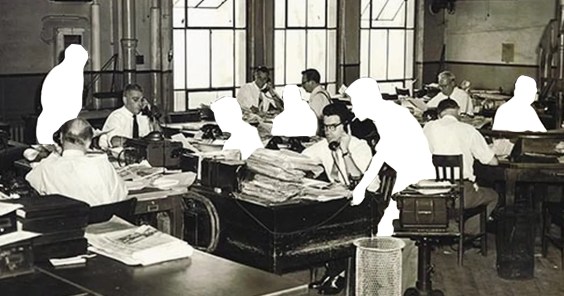
Free parking, it turns out, isn't free. A new study by transportation guru Bruce Schaller finds that free parking in Manhattan's Central Business district is responsible for a significant amount of New York City's staggering traffic congestion. Schaller's new study, Congested Streets: The Skewed Economic Incentives to Drive Into Manhattan (PDF), finds that free parking and improperly priced on-street parking imposes enormous costs on the city as a whole. Forget that political hot potato, congestion pricing. Mayor Bloomberg could, essentially, revamp New York City transportation policy (and meet some of his Long-Term Sustainability goals in the process) simply by making changes in the way New York City's manages and prices its parking supply.
Last year, Schaller's groundbreaking study, Necessity or Choice: Why People Drive in Manhattan (PDF) found that a whopping 80 percent of the motorists driving into Manhattan's Central Business District have viable transit options. The study released today builds on those findings and begins to answer the question: Why do people choose to drive into Manhattan rather than using transit?
One of the answers to this question, it turns out, is that lots of people have access to free parking and on-street parking priced far below market rates.

To conduct his most recent study, Schaller sent out a number of friendly, attractive, young people (OK... young women) to intercept and interview motorists about where they were driving, where they parked and how much it had cost. Stationed at strategic locations throughout the Manhattan Central Business District, the interviewers gathered viable surveys from 1,612 drivers.
Schaller crunched the numbers and here is what he found (the first stat is a real head turner):
- 57 percent of Manhattan Central Business District drivers don't pay anything for parking!!!
- 38 percent of motorists parking in the CBD have free parking provided to them.
- An additional 19 percent of motorists park for free at un-metered on-street spaces.
Transportation Alternatives' sums up the findings as follows:
The cost and availability of parking is the biggest factor influencing potential motorists' choice between driving and public transportation, and that free parking encourages driving and exacerbates Manhattan's traffic problem. "The City's current traffic policy has failed because the large majority of CBD drivers do not pay for parking," Schaller says. "These perverse economic incentives that encourage driving need to be fixed with new City policies recommended in this report."
Schaller and T.A. recommend that the City do five things to eliminate these "perverse incentives:"
- Restrict the availability and use of government-issued parking placards
- Rationalize the price of on-street meter parking and increase the number of metered spaces
- Encourage private companies to reduce employer provided parking
- Provide incentives to employers with a parking "cash-out"
- Institute congestion pricing in the Manhattan CBD






